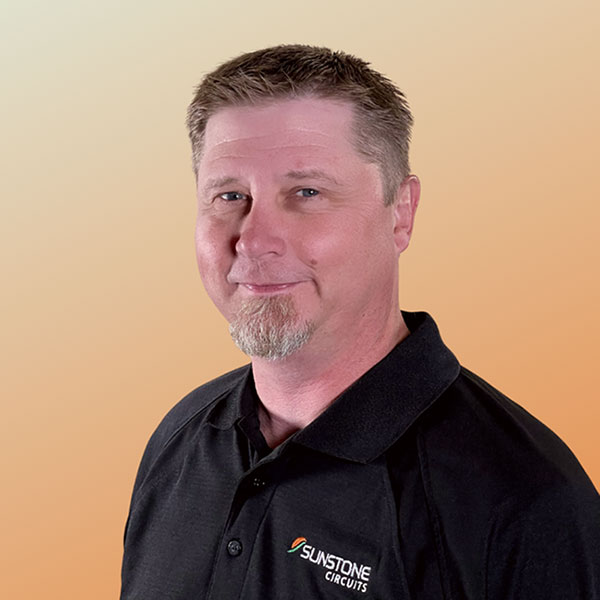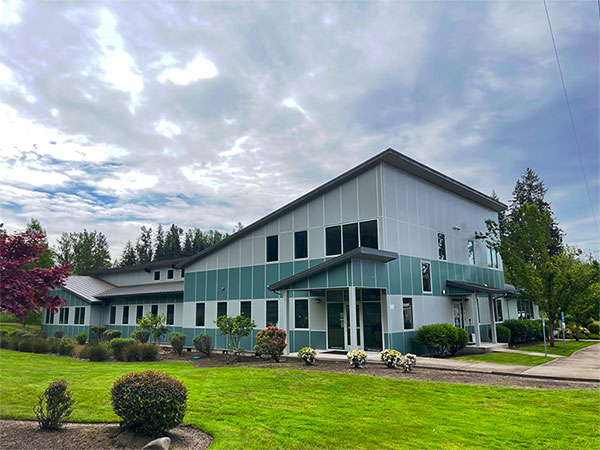One year out from its merger with American Standard Circuits, the West Coast fabricator is evolving to meet a changing customer base.
From its inception as part of Electronic Controls Design in 1972, to its joining with American Standard Circuits last July, Sunstone Circuits has been committed to innovating in the industry – for instance, it is said to be the first to offer online quoting and ordering in the 1990s – as well as providing exceptional customer service.
To better understand what makes Sunstone go, PCD&F visited the company's 32,000 sq. ft. facility in Mulino, OR, in late April, and took an inside look at its operations.
The company has historically been focused on high-mix, low-volume offerings with an emphasis on quickturns – having around 99% on-time delivery – and quality – with less than a 1% return rate, said vice president and general manager Matt Stevenson.
"That's kind of what we've been known for over the years," he said.

Matt Stevenson
ASC Sunstone usually has in the neighborhood of 4,000-5,000 active customers, and that customer base has always ranged from students at a local university or high school and local companies making audio equipment or aftermarket car parts, to entrepreneurs and inventors or Fortune 500 companies.
"It has really run the gamut," Stevenson said.
Quite a few of those customers remain, but the company's customer base has begun to narrow toward the military and aerospace industries, and with that change, ASC Sunstone has worked to meet the new requirements that come with those industries.
"Over the last 10 or 12 years we've been advancing our technology and advancing our ability to do more volume and offer more than we were in the past," he said.
Those new customers are primarily looking for domestic PCB suppliers with ITAR certification that can meet the strict standards for military and aerospace work.
"We're starting to see more stringent prints and kind of a higher level of overall requirements from our customers," he said, "rather than just the mom-and-pop inventors who are sending us a simple double-sided board without any other requirements."
That has led to a shift not just for the manufacturing side of the business, but also from a sales standpoint, as the stricter requirements require everyone to make sure they dot their i's and cross their t's, Stevenson said.
"It's challenging us to be better and understand everything a bit more," he said.
But even with the higher level of technology and changing customers, ASC Sunstone is not moving far from its roots, Stevenson said.
"We're still quickturn; if you need it in two days, even if it's 50-60 panels, we can still do it. We still like to do it," he said. "But our technology is getting higher and our ability to do more volume has gotten higher as well."

ASC Sunstone Circuits operates out of a 32,000 sq. ft. facility in Mulino, OR.
Last July, American Standard Circuits and Sunstone Circuits merged to form the new ASC Sunstone, which boasts a broad range of PCB types, materials, and certifications, and that has opened more opportunities for Sunstone to grow its services and customer base, Stevenson said.
He said in the past, Sunstone had to rely on recommending other manufacturers when customers needed capabilities the company didn't have, and even those other manufacturers had some limitations in what they could offer.
Today, with the addition of ASC's certifications and capabilities, there are very few jobs the company can't take on.
He said those new capabilities, combined with the knowledge sharing between staff members and the blending of the two companies' business models and customer service experience, are allowing ASC Sunstone to take the best of both worlds and elevate the business to new heights.
"We're now able to market and help customers with just about any PCB need they have," Stevenson said.
When it comes to the advancing technology and needs in the industry, ultra HDI is the next big step on the horizon, and there is a growing demand for heavier and thicker copper, quicker heat distribution, and higher-performance materials, he said.
"There's a lot more things to consider today than there ever were," he said.
Stevenson said those new demands, plus the continued growth of additive manufacturing processes for PCBs, mean the industry will likely look a lot different in the coming years.
"I could see in the next five to 10 years, it's a different industry from today," he said. "From a manufacturing as well as an engineering standpoint."
Sunstone has always evolved to keep up with technological curve, but has not traditionally been on the forefront, while ASC has specialized in the upper tier of technology and capabilities, Stevenson said.
So with Sunstone being one notch behind ASC on the proverbial tech ladder, the plan for the combined company's future is to follow that same trajectory, he said.
"Hopefully we can move up that curve at that same rate so they can start offloading some of their work to us as we're able to do it," Stevenson said. "Then they're able to take on more of the more high-tech, cutting-edge stuff."
With that plan for the future of the company in place, Stevenson also made sure to point to Sunstone's history and experience as a PCB fabricator, as well as its role in innovating the industry.
"Sunstone has been manufacturing in one location for 50 years, so we've got history behind us," he said. "And we've got people that have been here almost as long as that, so we're a company that's built on experience."
With the ASC merger, everything that a customer could want from a circuit board standpoint, whether its domestic production in Mulino or Chicago or offshore manufacturing of PCBs or anything else in the supply chain through ASC's Global Sourcing Division, the company has it all covered, Stevenson said.
"We are aiming to be that solutions provider," he said. "The ultimate source for PCBs in the industry for those companies."
Tyler Hanes is managing editor of PCD&F/CIRCUITS ASSEMBLY; This email address is being protected from spambots. You need JavaScript enabled to view it..














